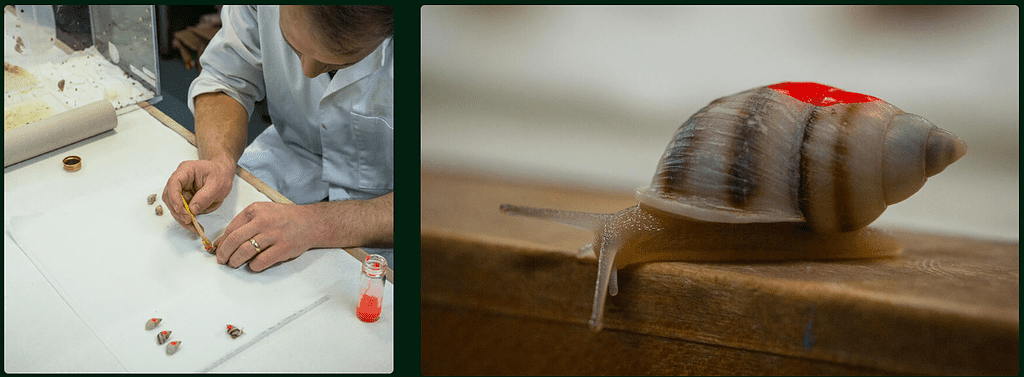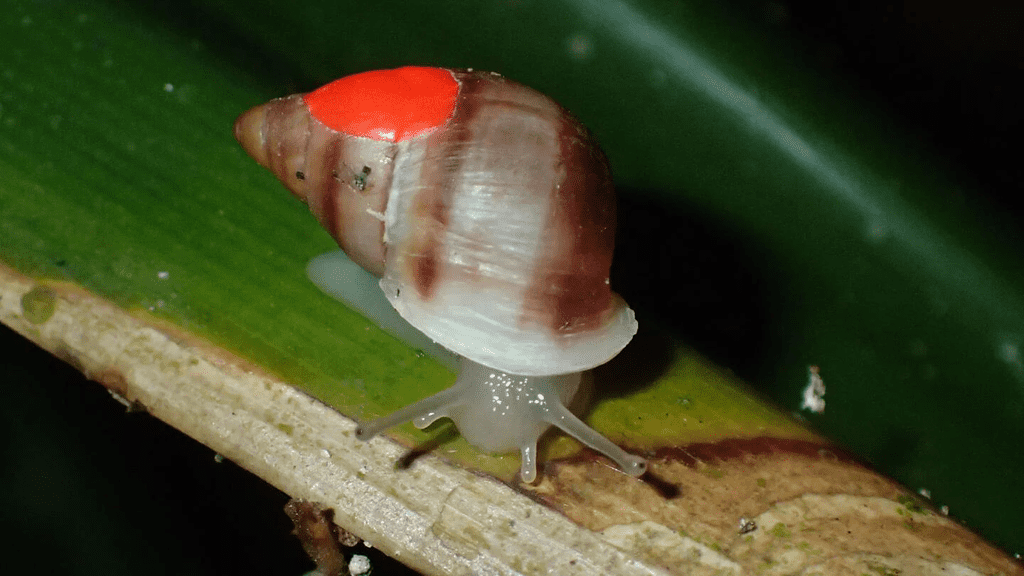Snails don’t travel long distances quickly, but five thousand hand-painted snails whooshed over 9,300 miles in an airplane to reach the tropical islands of Moorea and Tahiti. They weren’t going on vacation. They were on a mission: to bring balance to the ecosystem.

A conservation success story
Partula snails have biological and cultural importance in Polynesia. Each island has its own particular species, and the snails play a crucial role in recycling nutrients and spreading fungi to different locations. But when the invasive African giant land snail was brought to the islands, it brought disaster for the partula snails.
The invasive species was brought in the 1960s by French authorities, who wanted to use the species as a food source for people living there. As so often happened, the species escaped and started reproducing on the island, at the expense of local creatures. It also destroyed local crops, which was especially problematic for authorities.
Local governments devised a plan to protect the local ecosystem. They deployed another predator, the rosy wolf snail.
“Rosy wolf snails are incredible predators,” said Dave Clarke, of the ZSL, who is involved in the project. “They move two or three times faster than other snails. They can also track other snails by following their slime trails. Then they move in and kill and eat them. They are the guided missiles of the snail world.”
The rosy wolf snail was supposed to hunt the African giant snails and help the local population bounce back. But it didn’t. Instead, the rosy wolf snail focused its attention on the native species, which were easier to catch. This hurt the ecosystem even more, quickly driving several species to extinction.
It didn’t take long for the local partula snails to become critically endangered and extinct in the wild.
But some careful planning sparked new hope for the species. The last few surviving individuals were rescued in the early 1990s by the London and Edinburgh zoos. The zoos quickly kicked off an international conservation programme, rallying a dozen more zoos to help with the conservation project.
Back from the brink
In the zoos, the snail population flourished, and by the late 2010s, there were enough snails to start reintroducing them in the wild. Now, the largest such reintroduction took place, and researchers believe it to be the largest wild release of any extinct-in-the-wild species ever. Over 5,000 snails measuring 1-2 centimeters long were released in one go.
ZSL’s Curator of Invertebrates, Paul Pearce-Kelly, who coordinates the collaborative Partula conservation programme, said:
“Despite their small size these snails are of great cultural, ecological and scientific importance – they’re the Darwin’s finches of the snail world, having been researched for more than a century due to their isolated habitat providing the perfect conditions to study evolution.
“This collaborative conservation initiative is, without a doubt, helping to bring these species back from the brink of extinction and shows the conservation power of zoos to reverse biodiversity loss. With nature across the world increasingly under threat, these little snails represent hope for the world’s wildlife.”
“This was a win for the ongoing conservation efforts of these highly endangered snails,” says Kayla Garcia, zoological manager of invertebrates at the Saint Louis Zoo, in the statement.
It’s not the first release of Partula snails into the wild. For almost a decade, researchers have been carefully preparing populations and bringing them back to their natural environment. Paul added:
“After decades of work caring for these species in conservation zoos – and working with the Direction de l’environnement to prepare the islands for their return – we began releasing Partula snails back into the wild nine years ago.
“Since then, we’ve reintroduced over 21,000 Partula snails to the islands, including 11 Extinct-in-the-wild species and subspecies: this year’s was the largest reintroduction so far, thanks to the incredible work of our international team efforts with collaborators, including mollusc specialist Dr Justin Gerlach of Peterhouse, University of Cambridge.”
Not all the species made it, however. At least one species went extinct as it was unable to reproduce in captivity. But the ones that did are ready to reclaim their lands.

Reclaiming your home
The time is ripe for the Polynesian snails. Rosy wolf snails are very rare on the island — now hunted by yet another invasive predator, the New Guinea flatworm. But the flatworms, which spend their time on the ground, shouldn’t hunt the partula snails, which usually take to the trees.
The researchers painted a dot of red UV-reflective paint on each of the snails’ shells, to monitor the population (while not causing any downside to the creatures). Whether or not the species will survive in the wild remains to be seen but for now, the signs are encouraging. At a time when so many species are suffering, it’s a sign that conservation can also have successes. Hopefully, it can find success without first wiping the species from the wild.









